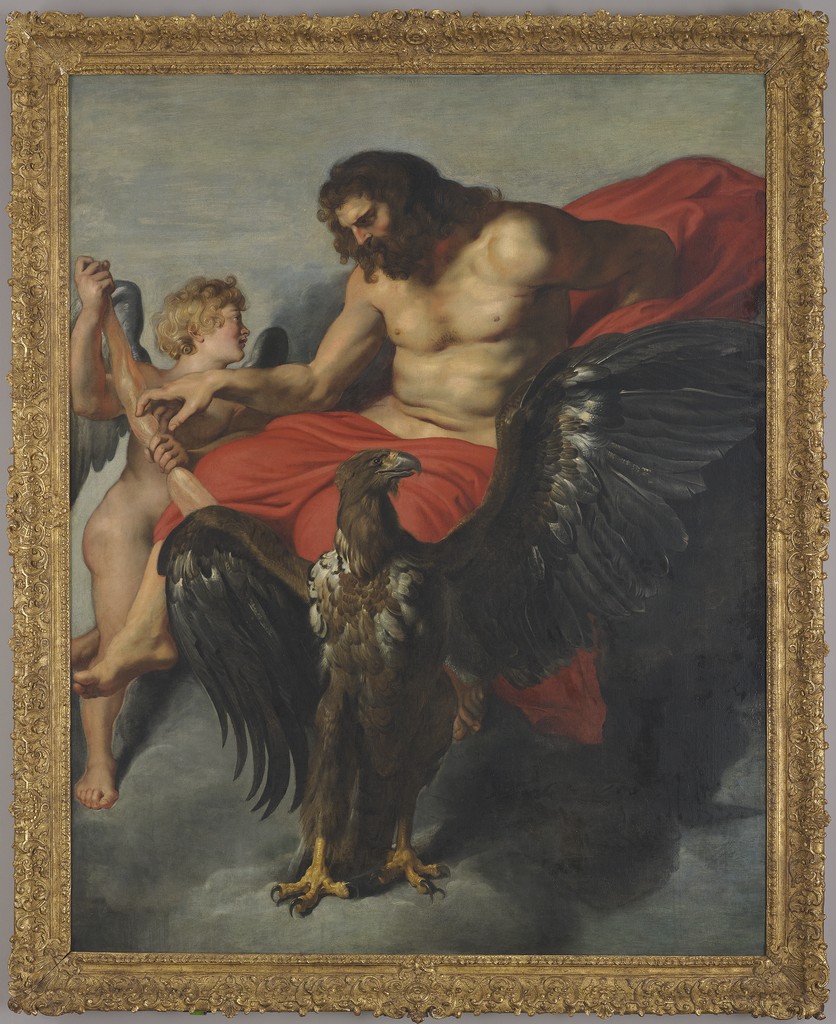Peter Paul Rubens's The Abduction of Ganymede

Rubens—a humanist, diplomat, art collector, and the head of a thriving, productive workshop—was one of the most important and influential artists of the seventeenth century. He was patronized by several European monarchs, including Marie de Medici of France and Charles I of England, but none more so than Philip IV of Spain, whose dominions included the Southern Netherlands, of which Flanders was a province.
The Museum’s painting depicts the beautiful youth, Ganymede, who was abducted by Jupiter (or his eagle) and subsequently became cupbearer to the god. The story reaches back to Homer and Virgil, but the account most familiar during the sixteenth and seventeenth centuries is in Ovid’s Metamorphoses: “The king of the gods [Jupiter] once burned with love for the Phrygian Ganymede, and something was found which Jove would rather be than what he was. Still he did not deign to take the form of any bird save that which could bear his thunderbolts [the eagle]. Without delay he cleft the air on his lying wings and stole away the Trojan boy, who even now, though against the will of Juno, mingles the nectar and attends the cups of Jove.”
In the oil sketch, Rubens based the boy’s pose on that of the elder son of Laocoön1; the artist made drawings of the antique sculptural group in Rome in the early 1600s. The round shape of Ganymede’s buttocks is echoed in the swell of his stomach and thigh, and his arms are spread upward, as though reaching for the heavens.

The tall vertical format of the finished painting, now in the Prado, indicates that it was likely intended to be hung between windows in the hunting lodge. The composition differs in several respects from the sketch, most notably in the boy’s expression and physique; the inclusion of a quiver with arrows (in the account in the Aeneid, Ganymede was abducted while hunting); and the pose of the eagle, whose beak catches the strap of the quiver rather than the small piece of red cloth in the sketch. Ganymede’s left hand now rests on the eagle’s outstretched wing,3 and Jupiter’s thunderbolt appears in the stormy sky.

The size of the Torre commission necessitated that Rubens delegate the execution of some of the paintings (based on his sketches) to his Antwerp colleagues. The master apparently saved for himself the subjects that attracted him most, among them Ganymede. The dramatic scene and Rubens’s love of the nude allowed the artist to demonstrate his virtuosity to great effect. The Princeton sketch highlights for us the role that Rubens’s intellectual acuity, direct and rapid working method, and compositional acumen played in contributing to his international success.
Ronni Baer
Allen R. Adler, Class of 1967, Distinguished Curator and Lecturer
1 As Alpers noted in her discussion of the Prado painting; see Svetlana Alpers, Corpus Rubenianum Ludwig Burchard, Part IX: The Decoration of the Torre de la Parada (London: Phaidon, 1971), 211.
2 Julius Held, “New Oil Sketches by Peter Paul Rubens,” Burlington Magazine 129 (1987): 577.
3 Held, 577. Held suggests this change between the sketch and the painting may be due to Rubens’s reliance on Michelangelo’s drawing of the subject made for Cavalieri.